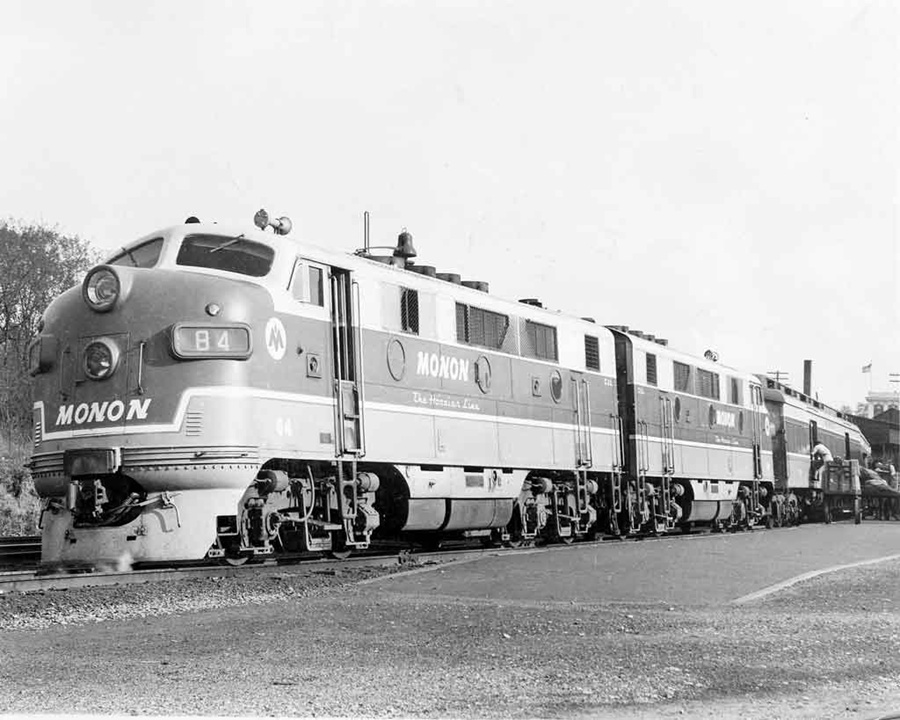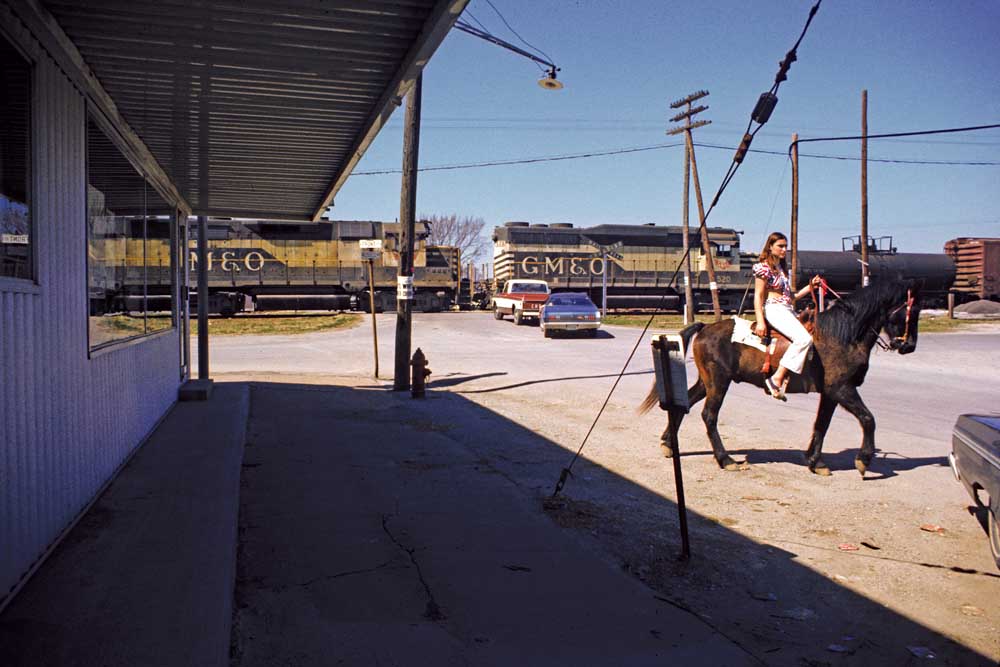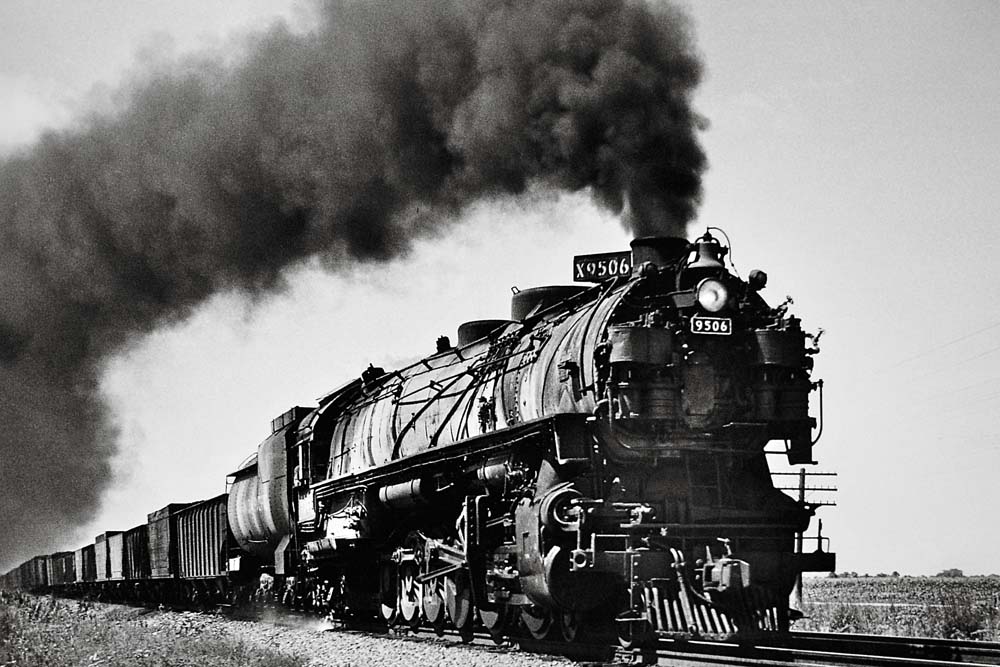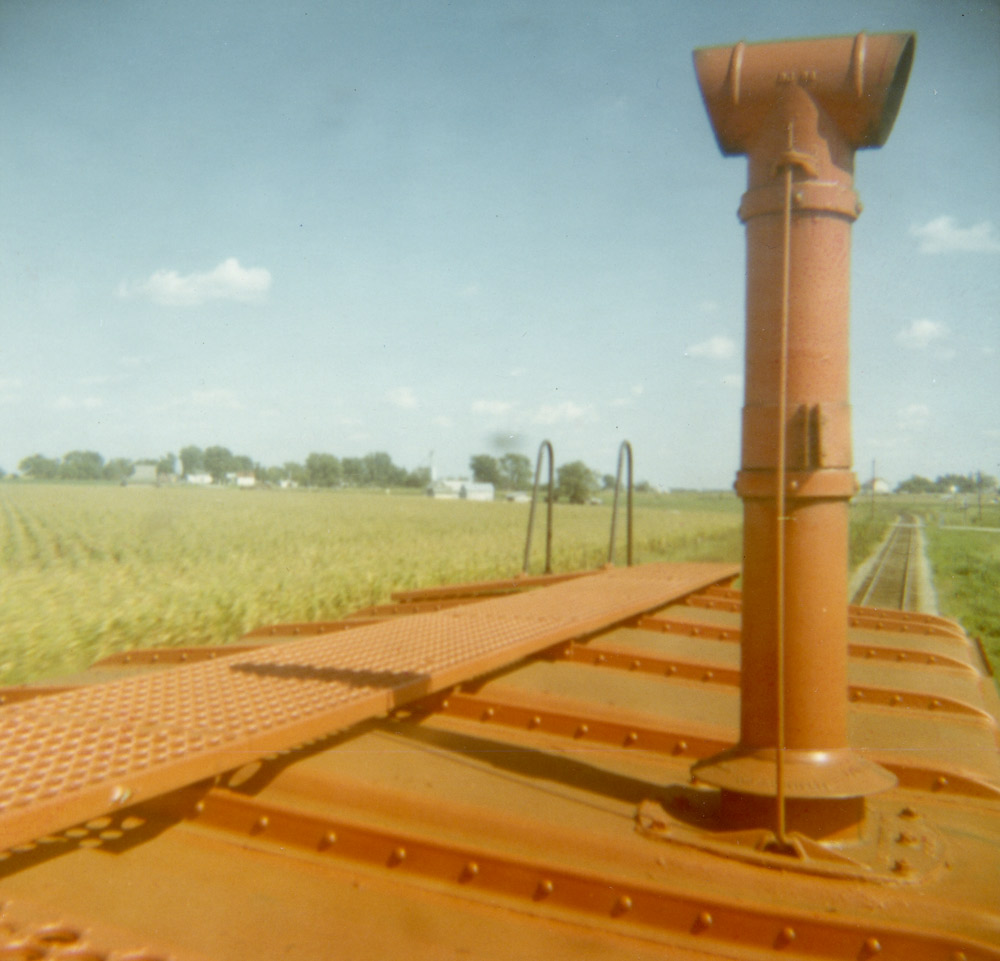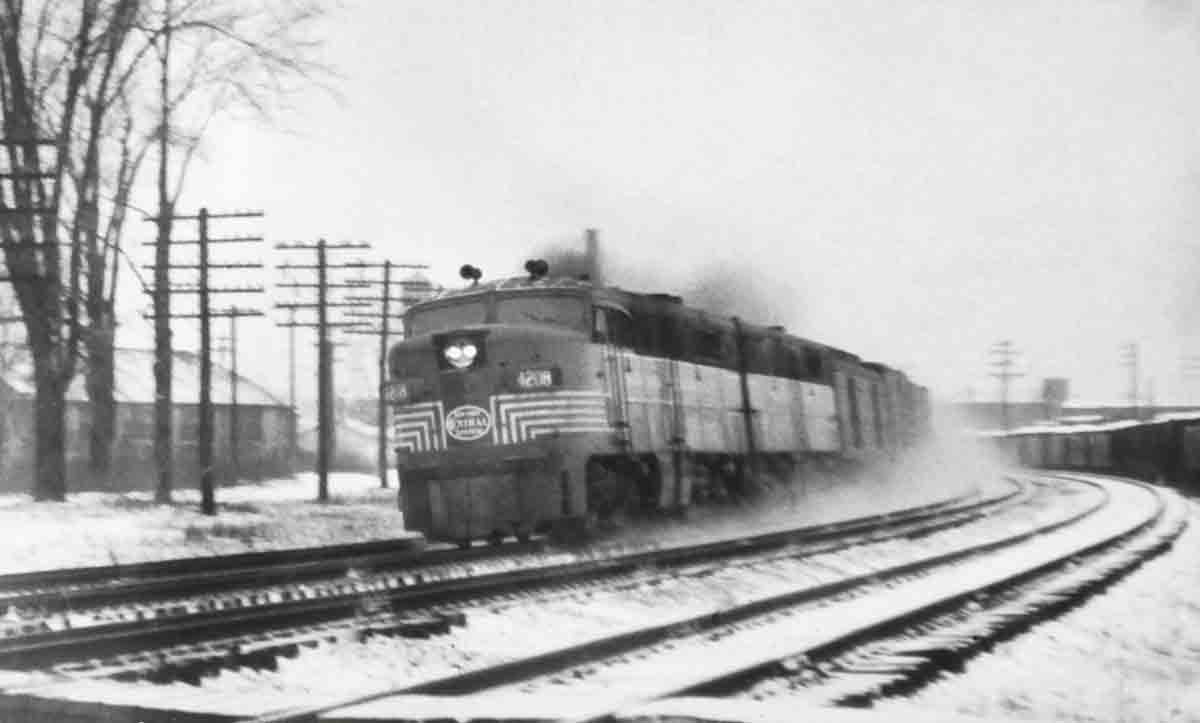During the late ’40s, I was trying to be a salesman in Chicago, selling glass jars and bottles. I didn’t fit the job in any way, but that’s another story. I was in the company office downtown when the phone rang. I answered, thinking it might be an order coming in. It wasn’t. Instead a familiar voice hailed me with, “Reid, ya wanna ride an F3 diesel to Monon and back?”
It was another short-notice, can’t-turn-it-down invitation from Howard Fogg, visiting Chicago from his home in New Jersey. This time it was an 88-mile jaunt down to the crossroads, and namesake, of the Monon. “You bet!” I told him.
“Well, get on down to Polk Street Station—I’ll see you there. I have passes for a cab ride. There’s just enough time after we get to Monon to get a slice of homemade apple pie at a restaurant next to the station. Then we’ll get the Thoroughbred back to Chicago.” Those cab passes may have been courtesy of John W. Barriger, then president of the Monon and a longtime patron of Fogg’s.
Well, the rides were great. It was the first and only time I rode an F3 on the main line. The view from the cab took some getting used to. Overpasses and truss bridges seemed way too small for a full-sized locomotive, and the tracks looked like narrow gauge. The crews provided a running commentary on the regular features of the run. At one place, a friendly lady would watch for the train, and the mail clerk would toss a newspaper in her direction. Further along, a bunch of kids were playing chicken on the tracks, so the engineer let ’em have it with the horn.
The day was a beauty. I had to pad my sales report with some fiction, but I moved on to better things soon, anyway.
First published in Winter 2006 Classic Trains magazine.
Learn more about railroad history by signing up for the Classic Trains e-mail newsletter. It’s a free monthly e-mail devoted to the golden years of railroading.





